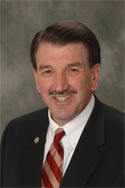By Walter V. Wendler
“At what point then is the approach of danger to be expected? I answer, if it ever reach us, it must spring up amongst us. It cannot come from abroad. If destruction be our lot, we must ourselves be its author and finisher.”
— Abraham Lincoln —
_________________________________________________
Diversified Access – The student newspaper on the campus of Southern Illinois University, The Daily Egyptian, posted an editorial last week regarding the favored treatment of freshmen over transfer students regarding scholarships. I concur with Kayli Plotner that more opportunities for financial aid should be granted to transfer students. The inertia to treat new students as prized citizens of the university is well intended but out of date. Diminished financial aid opportunities for transfer students come from within the university. The tradition, bordering on arrogance, that community college students are inferior is unfounded. Institutions that graduate half their students on time should use the looking glass to see incapability. The face of reality is that transfer students, who have completed an Associate’s degree, graduate on time at a rate greater than native freshmen students.
Opening doors of support to students who have demonstrated the capacity for college-level work through the attainment of a two-year degree deserves greater attention from within the university community. According to the Chancellor’s office of the California Community Colleges, “Transfer students from the California Community Colleges to the University of California system currently account for 48 percent of UC’s bachelor’s degrees in science, technology, engineering, and mathematics.”
New Ideas – The Evolllution: Illuminating the Lifelong Learning Movement, (sic) identified “The Top Five Roadblocks to Innovation in Higher Ed” in a post by Mike Scheuermann of Drexel University last week. The lack of funding is driving institutions away from innovation, not towards it, he says. Universities seem to fear change. Silos exist; guardedness stunts collaboration and people incongruously believe that something new will automatically bring innovation.
Distance education, reduced time to degrees, integrated community college articulation for seamless transfer, transparency in degree value, employment potential and borrowing, weekend programs, and a host of other not so new, but very powerful ideas could help transform universities and simultaneously strengthen academic values. But, unfortunately, too many insiders find too many excuses to sustain business as usual, without regard for institutional ability to offer cogent educational opportunities to students. Again, we can’t blame bankers or politicians for this unfortunate circumstance. Rather, university personnel create resistance to change.
Multiple Approaches – Last week, the Huffington Post posted a report, “Fixing Higher Education Requires a Diversity of Assessments and Reforms.” A group of faculty at Brevard College suggested adherence to the traditions of the university has not produced desired results: 11% of business leaders and 14% of the broader population “strongly agree” that graduates are well prepared for employment. Universities are failing at the most basic level — outsiders and insiders know it. If the university was either a well-run business or a well-run academic organization, this would not be the case.
Regrettably, many campuses fear change even in the incremental manner suggested in the three scenarios above. We should have liberty rather than hide-bound traditions regarding college students and their aspirations that haven’t existed in decades. Insiders should embrace thoughtful, incremental change lest they become Lincoln’s “authors and finishers.”
These three forces — access, innovation, and diversity of approaches — suggest that a radical change is neither proposed nor needed. Rather approaches addressing the changing nature of our students, and the rising costs of our services, their necessity and value should be sought. Tradition, in this case, chokes institutional purpose and life.
Our universities should heed young Lincoln’s wise counsel. Pogo Possum did, and noted, “I have seen the enemy and he is us.”




